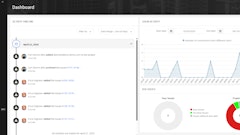
Editor's Note: This article is part of a series of articles by Lynne Eisaguirre that focus on challenging situations that may be facing your workforce. Previous articles include: Dealing with Problem Employees within Employment Law, Addressing Alcohol and Drug Use at Work and After, How to Deal with Rumors in the Workplace Before it Becomes Defamation, Basic Employment Law Principles When Dealing with Workplace Violence and How to Talk to Your Crew about Dress Code, Hygiene and Hairdo's.
What's the first step to managing slackers? Unfortunately, you have to get to know them in order to discover why they're slacking out. To do that, seek out evidence of what your slacker employees value. Do they wake up for certain activities but sleep through others? Do you notice them talking animatedly in the lunchroom on some topics? Study their habits and gather clues as to what useful rewards might be.
Another technique is, of course, the obvious one: you could just ask. Some questions to help you discover values might be as follows:
- I've been noticing that you don't seem as interested in your job as you used to be. What company reward might be a good motivator for you?
- I'm curious about your other jobs. Were there any where you felt consistently motivated? What kinds of rewards or incentives were offered?
- What's your dream job? What do you think would motivate you to do your best in that field?
Once you know what someone values, you'll find it easier to motivate them.
Talking With Slackers
If you loath managing slackers you're in good company. In a recent study by Leadership IQ, a training and research organization based in Washington, D.C., 87 percent of employees reported that working besides low-performing colleagues had made them want to change jobs. Further, 93 percent also claimed that working with low performers decreased their productivity.
"Low performers can feel like emotional vampires, sucking the energy out of everyone around them" said Leadership IQ chief executive Mark Murphy, whose company surveyed 70,305 employees, managers, and executives from 116 companies and organizations. Those surveyed were asked to list characteristics of a low performer. The top five characteristics were:
- A negative attitude
- A tendency to stir up trouble
- Often blames others
- Lacks initiative
- Is incompetent
Low performers excel in the art of work avoidance. They spend more time arguing their way out of tasks than it would take to simply complete them. They are good at identifying problems but not so good at finding solutions. They have well-crafted excuses for not getting anything done. And their sloth is often at the expense of more conscientious coworkers, who must pick up their slack.
Ironically enough, many slackers do not see themselves as slackers, preferring instead to blame others. Of the 87 percent of employee who want to get away from low performers, half are probably low performers themselves, if other surveys can be believed. For instance, more than half of American workers are not engaged in their jobs, according to a recent survey by Gallup. Most are "sleepwalking though their workdays," Gallup says. But 19 percent are what Gallup calls the "actively disengaged." The 23 million "actively disengaged" U.S. workers cost the national economy more than 300 billion a year in lost productivity.
Shaking up the Slackers
In short, if companies hope to keep their best employees, they should dump their worst. Otherwise, low performers will start dictating the company's cultures: productivity, quality, and service will all decline precipitously, and high performers will avoid your organization like the proverbial plague.
Former General Electric CEO Jack Welch famously fired the bottom 10 percent of his work force each year. Welch used sports metaphors to justify this extreme practice, saying he wanted to work with A-team performers. He was roundly criticized as callous by some, and indiscriminate by others, who pointed out that for some jobs, there's just not that much differentiation between the lowest and highest performance. Yet GE did flourish under his management. "I think the cruelest thing you can do to somebody is give them a head fake..nice appraisals..that's called false kindness," writes Welch in the book The Jack Welch Lexicon of Leadership.
Most managers avoid addressing the problem of slackers. When I teach management classes, for example, I routinely ask how many of them have someone on a performance improvement plan. Usually one or two of them do, despite surveys that show at least 20 percent of the employees in any workplace perform poorly.
There's plenty of false kindness and management wimpiness going around. In the Leadership IQ survey, only 14 percent of senior executives said their company effectively managed low performers. And only 17 percent of middle managers said they feel comfortable removing low performers.
Slackers can intimidate most leaders. A lot of managers simply don't want to deal with them. They will duck down a side hallway just to avoid engagement. Managers avoid slackers for many reasons. Some may lack the skills to manage performance effectively. Good performance management can be difficult and requires a manager to make certain that he or she knows what behavior constitutes acceptable performance and what results they seek. Many managers really do not know what the criteria should be, beyond counting "face time" in the office.
Other managers may be paranoid about confronting an employee who is different from them in some way: a different gender, race or generation. Finally, many managers don't want t make anyone feel bad, or they lack confrontation and conflict skills.
Can slackers be fired for goofing off at work? Ask the hapless New York City clerk fired by Mayor Michael Bloomberg for being discovered playing a game of solitaire when Bloomberg and a group of reporters trooped into the clerk's office on a touch. Bloomberg canned him on the spot, which is legal if employees have been warned that such behavior isn't allowed. (After all, you are supposed to work at work)
What to do about slackers? This is the standard coach, counsel, warn, plan, and then fire. Document, document, document all along the way.
Coaching
Coaching is what you ideally do every day. If you have an employee who spends more time making paper airplanes than working, remember the wild animal approximations. Small rewards received immediately and frequently seem to have more effect in performance than larger rewards delivered long after performances and infrequently. A $5 gift card may do more to motivate an employee than a potential promotion in the vague future. This is especially true for younger workers. Studies have shown that frequent specific feedback from managers, delivered shortly after a good performance, is all an employee needs to make good work a habit.
Conversely, when you need to correct behavior, you have to ask people to improve, check for improvement and then verbally compliment any improvement. Otherwise, they may wonder why they should bother if no one notices the change. It's important that the feedback be specific. Saying "Great job today," leaves your employee wondering what was so great and doesn't encourage her to do it again. Try "That report had no errors and I appreciate that you caught my mistake on page nine. Way to go!" instead.
This doesn't mean that you no longer need to give raises, performance reviews, and promotions. Giving regular verbal rewards to your employees simply means that you'll be writing better and better reviews for employees who are happier and more motivated.
You can rarely motivate lazy people by criticizing them. Criticism leads to discouragement and bad morale. It can lead to mutiny. Compliments followed by constructive criticism are more effective. When people receive recognition for the good things they do, they feel more motivated to be productive. When you approach a slacker, make a positive observation of something they do well, and then offer them a tip where they could improve. "Well, you've done a really great job here. Let's try to pick up the pace and get x number more like this done before lunch." Or, "You work very quickly and efficiently, but this could be a little better."
Never forget to tell people when they're doing well. Also, get to know people. Ask them about themselves at lunch, after work. Keep it light but let them see the more human side of you. Before you leave, ask someone about their plans for the weekend. Organize an outing once in awhile, invite families to a barbecue.
Save punishment for people who actively defy you with insubordination. Make them understand what impact their lack of initiative has on the entire team. Explain the impact of their actions, such as: When I see you staring out the window, I worry that you're not getting your report done, I need you to focus on how to do that by five o'clock."
Quantify the results of the job, not the actual activity involved so that employees will know what they're working towards.
Managing Face Time
Many managers are still managing by keeping track of face time, the time that people actually spend in the office. But in the information age, especially with younger workers, it's a good idea to consider quantifying what you really want them to accomplish and judging by results, not just time. Many studies show that younger workers want the flexibility to work remotely and be judged by results.
Many managers are reluctant to consider this approach. Because I'm an attorney, I'm asked to do a lot of consulting projects for law firms, many of whom are having trouble keeping their best young associates, especially women. When I suggest that they allow attorneys who have done well the privilege of working at home or other out of the office locations, many older partners are horrified. We might need them for something!, they cry.
Never mind that most legal work these days, even in-office conferences, is conducted over the phone or the internet. Never mind that attorneys keep track of their time in tenths of an hour, so it's very easy to quantify who is working or not working. The resistance to change remains strong in many professions.
Even if you don't decide to loosen up on where the work actually needs to be done, however, you'll benefit from setting specific, measurable objectives for the job. These need to be results that are quantifiable, easy to understand, and that everyone can agree on. Of course, these objectives should actually add value to the organization. Employees - especially the best and the brightest - rebel eventually against busy work. Maybe the slacker you're trying to shape up isn't lazy but just bored or failing to see the larger meaning in what you're asking them to accomplish.
Lynne Eisaguirre is a former practicing employment attorney whose media credits include CNN Headline News, ABC News, Bloomberg TV, U.S. News & World Reports, The Boston Globe and The San Francisco Chronicle, among many others. She presents speeches and workshops on management issues to clients such as Bristol Myers Squibb, Harley Davidson, Sun Microsystems and Southwest Airlines. You can reach Lynne at www.workplacesthatwork.com .



















